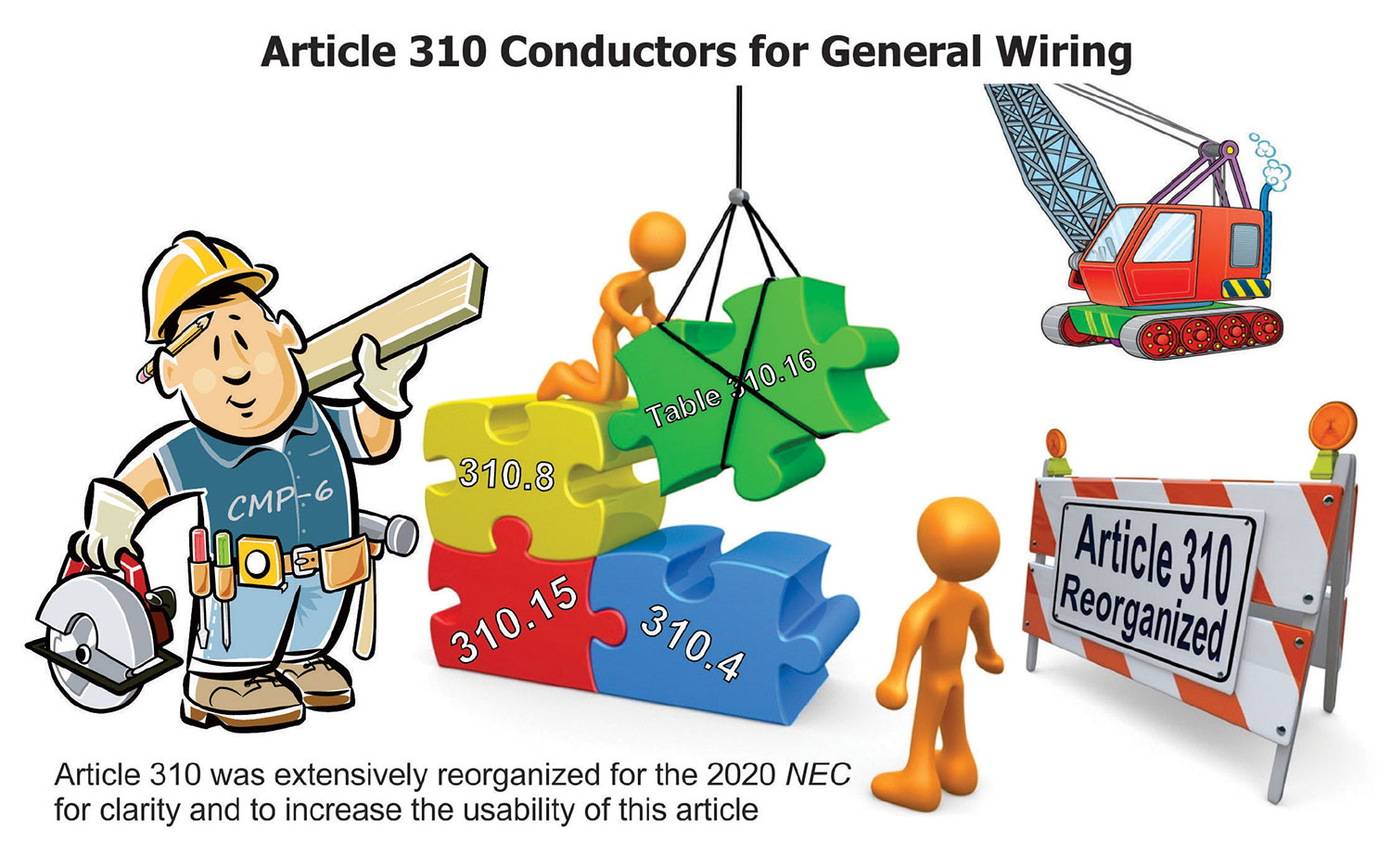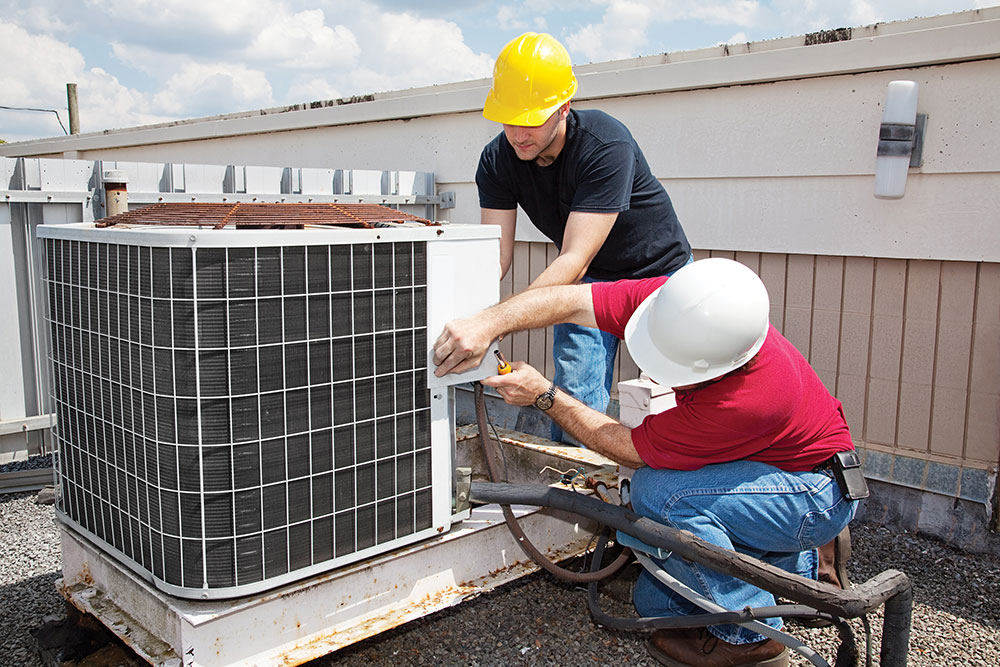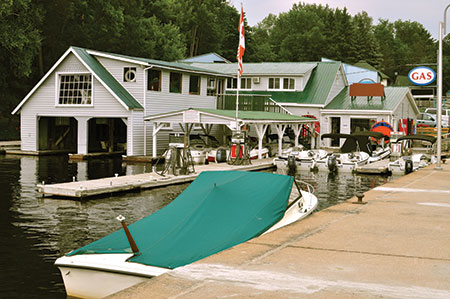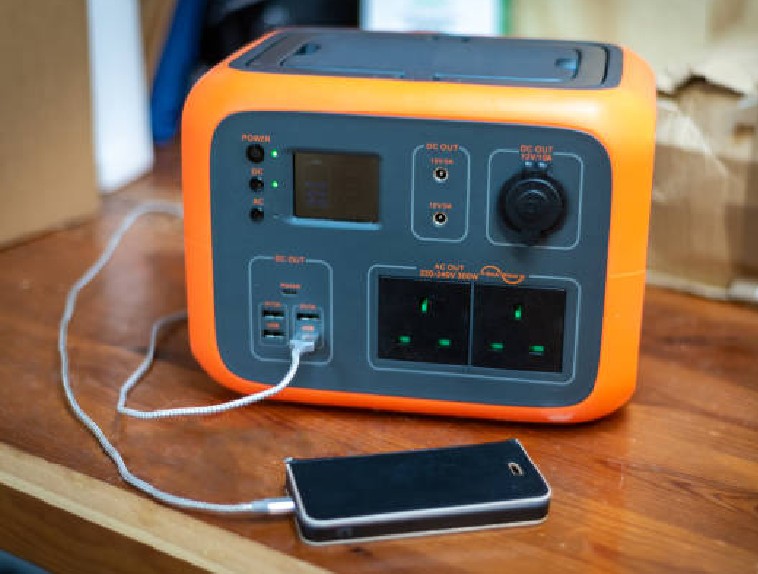I have received a steady stream of questions from the readers of my column for over 30 years. In each new article, I strive to provide answers to many of the posted questions by compiling them based on specific subjects.
This article compiles eight questions about the differences between communication, control, Class 1 and Class 2 circuits, Power over Ethernet (PoE) circuits, low-energy power circuits, extra-low-voltage power circuits, and fire alarm circuits. It also provides answers to these questions based on the requirements of the Canadian Electrical Code, Part I (CE Code).
The 26th edition of the CE Code – C22.1:2024 was used in answers to the posted questions.
Question 1
Is there a difference between communication circuits, control circuits, Class 1 and Class 2 circuits, Power over Ethernet (PoE) circuits, low-energy power circuits, extra-low-voltage power circuits, and fire alarm circuits?
Answer to question 1: There is a difference between these circuits, as some are intended solely for communication signals, some for providing remote control of other circuits or managing the performance of specific devices, some are designed to supply limited power for operating certain devices, and some are used to transmit power or data (or both) through Power over Ethernet (PoE) circuits. Additionally, in the case of a fire alarm system, there are input circuits that transmit signals from fire alarm initiating devices (including manual stations, heat or smoke detectors, and water flow detection devices) to the control unit, as well as output circuits that connect the control unit to audible and visual (strobe lights) signaling devices to activate them in the event of a fire.
Section 0 of the CE Code offers the following definitions on this subject:
“Communication circuit — a circuit that is part of a communication system.
Control circuit — the circuit that carries the electric signals directing the performance of a control device, but that does not carry the power that the device controls.
Extra-low-voltage power circuit — a circuit, such as a valve operator and similar circuits, that is neither a remote control circuit nor a signal circuit, but that operates at not more than 30 V and that is supplied from a transformer or other device restricted in its rated output to 1000 V•A, but in which the current is not limited in accordance with the requirements for a Class 2 circuit.
Low-energy power circuit — a circuit other than a remote control or signal circuit that has the power supply limited in accordance with the requirements for Class 2 remote control circuits.
Remote control circuit — any electrical circuit that controls any other circuit through a relay or an equivalent device.
Signal circuit — any electrical circuit, other than a communication circuit, that supplies energy to a device that gives a recognizable signal, such as circuits for doorbells, buzzers, code-calling systems, signal lights, etc.”
Section 16 of the CE Code offers additional classification of Class 1 and Class 2 circuits, and their respective limitations for use as follows:
“16-002 Classifications
Circuits covered by this Section are that portion of the wiring system between the load side of the overcurrent device or the power-limited supply and all connected equipment, and shall be classified as follows:
a) Class 1 — circuits that are supplied from sources having limitations in accordance with Rule 16-100; and
b) Class 2 — circuits that are supplied from sources having limitations in accordance with Rule 16-200
16-100 Limitations of Class 1 circuits
1) Class 1 extra-low-voltage power circuits shall be supplied from a source having a rated output of not more than 30 V and 1000 V•A.
2) Class 1 remote control and signal circuits shall be supplied by a source not exceeding 600 V.“
16-200 Limitations of Class 2 circuits (see Appendix B)
1) Class 2 circuits, depending on the voltage, shall have the current limited as follows:
a) 0 to 20 V — circuits in which the open-circuit voltage does not exceed 20 V shall have an overcurrent protection rating not exceeding 5 A, except that overcurrent protection shall not be required where the current is supplied from
i) primary batteries that under short-circuit will not supply a current exceeding 7.5 A after 1 min;
ii) a transformer or other power supply device having a Class 2 output; or
iii) a device having characteristics that, under normal operating conditions or under fault conditions, limits the output current to a value not exceeding 5 A and the output volt amperes to a value not exceeding 5 A multiplied by the open-circuit voltage;
b) over 20 V but not exceeding 30 V — circuits in which the open-circuit voltage exceeds 20 V but does not exceed 30 V shall have an overcurrent protection rating in amperes not exceeding 100 V•A divided by the open-circuit voltage, except that the overcurrent protection shall not be required where the current is supplied from
i) primary batteries that under short-circuit will not supply a current exceeding 5 A after 1 min;
ii) a transformer or other power supply device having a Class 2 output; or
iii) a device having characteristics that, under normal operating conditions or under fault conditions, limit the output current to a value in amperes not exceeding 100 V•A divided by the open-circuit voltage;
c) over 30 V but not exceeding 60 V — circuits in which the open-circuit voltage exceeds 30 V but does not exceed 60 V shall have an overcurrent protection rating in amperes not exceeding 100 V•A divided by the open-circuit voltage, except that the overcurrent protection shall not be required where the current is supplied from
i) a transformer or other power supply device having a Class 2 output; or
ii) a device having characteristics that, under normal operating conditions or under fault conditions, limit the output current to a value in amperes not exceeding 100 V•A divided by the open-circuit voltage;
d) over 60 V but not exceeding 150 V — circuits in which the open-circuit voltage exceeds 60 V but does not exceed 150 V shall have an overcurrent protection rating in amperes not exceeding 100 V•A divided by the open-circuit voltage, and in addition shall be equipped with current-limiting means other than overcurrent protection that, under normal operating conditions or under fault conditions, limit the output current to a value in amperes not exceeding 100 V•A divided by the open-circuit voltage.
2) A device having energy-limiting characteristics shall be permitted to consist of a series resistor of suitable rating or other similar device.
3) A Class 2 power supply shall not be connected in series or parallel with another Class 2 power source.
4) A device having a Class 2 output shall be permitted for use as a device having energy-limiting characteristics, provided that it is marked as being suitable for the purpose.”
Section 16 also includes a subsection that applies to Class 2 power and data communication circuits (see Rule 16-300 of the CE Code).
Rule 16-310 offers a dedicated definition on this subject, as follows: “Class 2 power and data communication circuit — a Class 2 circuit in which the conductors transmit power or data, or both“, and this definition is only used in the CE Code under the scope of Rule 16-300.
Question 2
What requirements of the CE Code apply to wiring methods for communication, control, Class 1, Class 2 circuits, Power over Ethernet (PoE) circuits, low-energy power circuits, extra-low-voltage power circuits, and fire alarm circuits?
Answer to question 2: Wiring methods in general are governed by the provisions of Section 12 of the CE Code. However, the scope of Section 12 (Rule 12-000) allows for several exemptions regarding the installation of Class 2 circuits, community antenna circuits, and optical fiber circuits:
“12-000 Scope (see Appendix B)
1) The provisions of Section 12 apply to all low-voltage and extra-low-voltage wiring installations except for
a) Class 2 circuits unless otherwise specified in Rules 12-2300 to 12-2320 and Section 16;
b) community antenna distribution and radio and television circuits unless otherwise specified in Section 54;
c) optical fiber cables unless otherwise specified in Section 56;
d) communication circuit conductors unless otherwise specified in Section 60.”
It means that the requirements of Section 12 do not apply to the wiring of the circuits indicated in the exemption above. This means that, for example, the wiring of a typical lighting or power circuit in a building that is required to be of non-combustible construction must be installed in raceway or provided by means of an armored cable. However, wiring of circuits subjected to the exemption under the scope of Section 12 can be represented in the same building of non-combustible construction by non-metallic-jacketed cables, as mechanical protection of conductors for such Class 2, communication, control, or community antenna circuits is deemed unnecessary.
Thus, except for Rules 12-2300 to 12-2320, conductors of Class 2 circuits do not have to be installed in accordance with Rules of Section 12, but they must comply with the more relaxed requirements of Rule 16-210 of the CE Code.
Wiring of community antenna distribution and radio and television installations must be done in accordance with Section 54of the CE Code, installation of optical fiber circuits must comply with Section 56 of the CE Code, and conductors of communication circuits must meet the provisions of Section 60 of the CE Code.
As can be seen from these respective Sections of the CE Code, wiring methods mandated by these Sections are more relaxed than provisions for wiring methods in Section 12.
However, if raceways are intended to be installed for communication circuits in conformance with Section 60 of the CE Code, installation of such raceways must comply with relevant provisions of Section 12 (see Rule 60-302 below):
“60-302 Raceways
Raceways for insulated communication cable shall be installed in accordance with the requirements of Section 12 and, if metal, shall be grounded in accordance with Section 10.”
In respect to wiring of fire alarm systems, it should be noted that a fire alarm system may be required in a building by the National Building Code of Canada (NBCC) from fire protection/life safety perspective, and if a fire alarm system is installed in a building, installation requirements of a fire alarm system are subjected to additional restrictions, despite the fact that input and output circuits of a typical fire alarm system (see answer to question 1 above) operate at extra-low voltage.
Thus, installation of fire alarm system devices must comply with ULC S524, and wiring of fire alarm circuit conductors must conform to Rule 32-102 of the CE Code, as shown below:
“32-102 Wiring method
1) All insulated conductors of a fire alarm system shall be
a) installed in metal raceway of the totally enclosed type;
b) incorporated in a cable having a metal armour or sheath;
c) installed in rigid non-metallic conduit; or
d) installed in electrical non-metallic tubing, where embedded in at least 50 mm of masonry or poured concrete.
2) Notwithstanding Subrule 1), insulated conductors installed in buildings of combustible construction in accordance with the Rules of Section 12 shall be permitted to be
a) non-metallic-sheathed cable;
b) fire alarm and signal cable; or
c) installed in a totally enclosed non-metallic raceway.
3) The insulated conductors shall be installed to be entirely independent of all other wiring and shall not enter a raceway, box, or enclosure occupied by other wiring, except as may be necessary for connection to
a) the point of supply;
b) a signal;
c) an ancillary device; or
d) a communication circuit.
4) All wiring of a communication system connected to a fire alarm system to extend the fire alarm system beyond the building shall conform to the applicable Rules of Section 60.
5) All insulated conductors contained in the same raceway or cable shall be insulated for the highest voltage in the raceway or cable.”
It should be noted that if Class 2 remote control and signal circuits form parts of communication circuits, installation of such circuits must conform to Section 60 of the CE Code.
Accordingly, when (PoE) Class 2 power and data communication circuits are installed, their installation does not have to comply with Section 60, but must conform to Rules 16-300 to 16-350 of the CE Code (see Rule 16-012 below):
“16-012 Circuits in communication cables
1) Class 1 circuits shall not be run in the same cable with communication circuits.
2) Class 2 remote control and signal circuits or their parts that use conductors in a cable assembly with other insulated conductors forming parts of communication circuits are, for the purposes of this Code, deemed to be communication circuits and shall conform to the applicable Rules of Section 60.
3) Class 2 power and data communication circuits shall comply with Rules 16-300 to 16-350.”
It should also be noted that when Class 2 nurse call circuits are intended for installation in a patient care area in accordance with Subrule 24-104(8) of the CE Code, as shown below, wiring methods for such nurse call circuits must comply with Section 12 (and not with relaxed provisions of Rule 16-210):
“24-104 8) A circuit consisting of conductors connected to communication or nurse call equipment that is installed within a patient care area shall be deemed a Class 1 circuit but shall have its voltage and power limited in accordance with Rule 16–222 3).”
Question 3
Are conductors for communication, control, Class 2 circuits, and fire alarm circuits permitted to be installed in raceways that also contain conductors supplying electric lighting, power, or Class 1 circuits?
Answer to question 3: Let’s start with the fire alarm system conductors. As explained above in Subrule 32-102 (3), fire alarm system conductors must be installed entirely independently of all other wiring.
Sections 16, 54, 56, and 60 have similar provisions for conductors of Class 2 circuits, community antenna distribution circuits, optical fiber circuits, or communication circuits.
Rules 16-212; 54-400; 56-200 and 60-308 of the CE Code clarify requirements for such separation and conditions under which these requirements may be relaxed (see below):
“16-212 Separation of Class 2 circuits from other circuits
3) Unless the insulated conductors and cables of Class 2 circuits are separated from the insulated conductors of electric lighting, power, or Class 1 circuits by an acceptable barrier, the insulated conductors and cables in Class 2 circuits shall not be placed in any raceway, compartment, outlet box, junction box, or similar fitting with the insulated conductors of electric lighting, power, or Class 1 circuits.
4) Subrule 3) shall not apply where insulated conductors of a power circuit are in the raceway, compartment, outlet box, junction box, or similar fitting for the sole purpose of supplying power to the Class 2 circuits, and all conductors are insulated for the maximum voltage of any insulated conductor in the enclosure, cable, or raceway, except that no Class 2 insulated conductors or cables installed in a raceway, compartment, outlet box, junction box, or similar fitting with such insulated conductors of a power circuit shall show a green-coloured insulation, unless the Class 2 insulated conductor is completely contained within a jacketed cable throughout the length that is present in such a raceway or enclosure.
54-400 Separation from other conductors
3) The cables of a community antenna distribution circuit shall not be placed in any raceway, compartment, outlet box, junction box, or similar fitting that contains insulated conductors of electric lighting, power, or Class 1 circuits, unless
a) the cables of the community antenna distribution circuit are separated from the electric lighting, power, or Class 1 circuit insulated conductors by a barrier that conforms to Rule 12-904 2) for insulated conductors in raceways or Rule 12-3030 1) for insulated conductors in boxes, cabinets, and fittings; or
b) the power or Class 1 insulated conductors are placed solely for the purpose of supplying power to the community antenna distribution circuit.
56-200 Non-conductive optical fiber cables (see Appendix B)
1) Non-conductive optical fiber cables shall not occupy the same raceway with insulated conductors of electric lighting, power, or Class 1 circuits, unless
a) the non-conductive optical fiber cables are functionally associated with the electric lighting, power, or Class 1 circuit not exceeding 750 V; and
b) the number and size of non-conductive optical fiber cables and other types of insulated conductors in the raceway meet with the applicable requirements for the electrical wiring method.
2) Non-conductive optical fiber cables shall not occupy the same cabinet, panel, outlet box, or similar enclosure housing the electric terminals of a lighting, power, or Class 1 circuit, unless
a) the non-conductive optical fiber cables are functionally associated with the lighting, power, or Class 1 circuit not exceeding 750 V, and the number and size of non-conductive optical fiber
cables and other types of insulated conductors in the enclosure meet with the applicable requirements for the electrical wiring method; or
b) the non-conductive optical fiber cables are factory assembled in the enclosure.
3) Notwithstanding Subrules 1) and 2), for industrial establishments only, where conditions of maintenance and supervision ensure that only authorized persons service the installation, non[1]conductive optical fiber cables shall be permitted to occupy the same raceway, cabinet, panel, outlet box, or similar enclosure as electric power, control, or instrumentation cables.
56-202 Conductive optical fiber cables (see Appendix B)
2) Conductive optical fiber cables shall not occupy the same raceway, panel, cabinet, or similar enclosure housing electric lighting, power, or Class 1 circuits.
3) Conductive optical fiber cables shall not occupy the same cabinet, panel, outlet box, or similar enclosure housing the electrical terminals of a Class 2, communications, community antenna distribution, or radio and television circuit, unless
a) the conductive optical fiber cables are functionally associated with the Class 2, communication, community antenna distribution, or radio and television circuit; or
b) the conductive optical fiber cables are factory assembled in the enclosure.
5) Notwithstanding Subrules 2) and 3), for industrial establishments only, where conditions of maintenance and supervision ensure that only authorized persons service the installation, conductive optical fiber cables shall be permitted to occupy the same raceway, cabinet, panel, outlet box, or similar enclosure as electric power, control, or instrumentation cables provided the total length of each conductive optical fiber cable does not extend beyond the boundaries of the industrial establishment.
56-204 Hybrid cables
1) Optical fibers shall be permitted within the same hybrid cable for electric lighting, power, or Class 1 circuit conductors not exceeding 750 V, or within the same hybrid cable for Class 2, communications, community antenna, or radio and television circuit conductors, provided that the functions of the optical fibers and the insulated conductors are associated.“
60-308 Separation from other insulated conductors
3) The cables of an electrical communication system shall not be placed in any outlet box, junction box, raceway, or similar fitting or compartment that contains insulated conductors of electric lighting or power systems or of Class 1 circuits (as defined in Rule 16-002), unless
a) the communication cables are separated from the other conductors by a suitable partition; or
b) the power or Class 1 insulated conductors are placed solely for the purpose of supplying power to the communication system or for connection to remote control equipment, except that no communication cables installed in an outlet box, junction box, raceway, or similar fitting or compartment that contains such insulated conductors of power or Class 1 circuits shall show a green-coloured insulation, unless the insulated communication conductor is completely contained within a jacketed cable throughout the length that is present in such raceways or enclosures.”
As it is seen from the respective provisions of the referenced Sections of the CE Code for separation from other insulated conductors, these provisions are almost similar, and relaxation for such separations is based on conditions of:
a) functional association of such Class 2, communication, or community antenna circuits with the lighting, power, or Class 1 circuits, and
b) insulation of all conductors for the maximum voltage of any insulated conductor located in the raceway.
Question 4
Is a single cable allowed by the CE Code to be used for Class 2 circuits and power circuits, or to be used for more than one Class 2 circuit?
Answer to question 4: Subrule 16-212(5) and Rule 16-214 offer the answer to this question as follows:
“16-212 5) Notwithstanding Subrule 3), electric lighting, power, and Class 1 circuit conductors shall be permitted to be used in a cable that contains Class 2 circuit conductors, provided that the cable is marked as being suitable for applications of Class 2 circuit conductors that are
a) intended for the supply or control, or both, of remote devices associated with the non-Class 2 conductors; and
b) insulated for the maximum voltage of any conductor in the cable.
16-214 Insulated conductors of different Class 2 circuits in the same cable, enclosure, or raceway
Insulated conductors of two or more Class 2 circuits shall be permitted within the same cable, enclosure, or raceway, provided that all the insulated conductors in the cable, enclosure, or raceway are insulated for the maximum voltage of any conductor.“
Question 5
Is electrical equipment used in communication, control, Class 1, Class 2 circuits, low-energy power circuits, extra-low-voltage power circuits, or fire alarm circuits required to be bonded to ground?
Answer to question 5: First, let’s discuss the CE Code requirements for bonding of equipment comprising a fire alarm system. As indicated in the answer to question 2, a fire alarm system is a life safety system mandated by the NBCC, and the electrical supervision of fire alarm circuits and equipment is paramount from the perspective of fire protection. Therefore, even though input and output circuits of a typical fire alarm system operate at extra-low voltage, bonding of fire alarm system equipment is specifically required by Rule 32-104 of the CE Code (see below):
“32-104 Equipment bonding
1) Exposed non-current-carrying metal parts of electrical equipment, including outlet boxes, conductor enclosures, raceways, and cabinets, shall be bonded to ground in accordance with Section 10.
2) Where a non-metallic wiring system is used, a bonding conductor shall be incorporated in each cable and shall be sized in accordance with Rule 10-616.”
Bonding requirements for all fixed electrical equipment are governed by Rule 10-600 of the CE Code, and this Rule mandates that except for equipment operating at extra-low voltage (at voltage not exceeding 30 Vac or at voltage not exceeding 60 V dc), all non-current carrying conductive parts of electrical equipment must be bonded to ground, as shown below:
“10-600 Bonding for fixed electrical equipment
1) Except as permitted by Subrule 2), non-current-carrying conductive parts of electrical equipment shall be connected to a bonding conductor.
2) Non-current-carrying conductive parts of extra-low-voltage electrical equipment shall not be required to be connected to a bonding conductor.”
It means that electrical equipment used in communication, control, Class 1, Class 2 circuits, or low-energy power circuits must be bonded to ground.
Question 6
Is a circuit supplying power to a 40 W rated sprinkler valve operating by AC voltage in the range of 22 to 28 volts, considered to be a Class 2 circuit?
Answer to question 6: Although the electrical ratings specified in the question clearly demonstrate that the circuit operating 40 Watt, 24 V ac valve fits the criteria of a Class 2 low-energy power circuit, such circuit must be considered as a Class 1 circuit, based on conditions outlined in Rule 16-010 below, as a sprinkler system is a fire protection system, and a failure to operate devices of a fire protection system may introduce a direct fire or life safety hazard:
“16-010 Circuits to safety control devices
Where the failure to operate of a remote control circuit to a safety control device will introduce a direct fire or life hazard, the remote control circuit shall be deemed to be a Class 1 circuit.”
Question 7
Do wiring methods for circuit conductors that operate electromagnetic locks or hold-open devices installed on egress doors have to comply with the requirements of Section 12 or with Section 32 of the CE Code?
Answer to question 7: ULC S524 “STANDARD FOR INSTALLATION OF FIRE ALARM SYSTEMS“ considers such devices as electromagnetic locks and hold-open devices to be devices “ancillary to a fire alarm system, as such devices are operated by a fire alarm system but are not part of a fire alarm system. These devices are not subjected to electrical supervision on a fire alarm annunciator, and their operation must be validated during integrated testing of fire protection systems. ULC S524 offers the following definition for an ancillary device:
“ANCILLARY DEVICE – A device which has a life-safety application, is connected to the fire alarm system, but is not part of the fire alarm system”
Therefore, circuits operating such ancillary devices are Class 1 circuits in accordance with Rule 16-010 of the CE Code, regardless of limitation of their voltage and power output, and wiring methods for conductors in such circuits must comply with Section 12 of the CE Code. As it was indicated above – only wiring of devices comprising a fire alarm system proper (fire alarm initiating devices, fire alarm signalling devices, control unit, annunciators or equipment of a central alarm and control facility), must comply with Rule 32-102 of the CE Code.
Question 8
Is it allowed by the CE Code to use a fire alarm and signal cable (FAS 90) in control and instrumentation or in Class 2 circuits?
Answer to question 8: Table 19 of the CE Code allows use of a typical fire alarm cable in control circuits and in Class 2 circuits. It should be noted that in addition to FAS 90, a wide range of conductors and cables meeting requirements of Subrules 32-100(4) and (5), are allowed by Table 19 for use in fire alarm systems (see below):
“32-100 Insulated conductors and cables
4) Conductors shall have an insulation rating not less than 300 V and shall be not smaller than
a) No. 16 AWG for individual insulated conductors pulled into raceways;
b) No. 19 AWG for individual insulated conductors laid in raceways;
c) No. 19 AWG for an integral assembly of two or more insulated conductors; and
d) No. 22 AWG for an integral assembly of four or more insulated conductors.
5) Insulated conductors and cables shall be suitable for the purpose and of the type selected in accordance with Rule 12-102 3), except that individual insulated conductors smaller than No. 14 AWG copper installed in a raceway shall be equipment wire of the type selected in accordance with Rule 12-122 1).”
Hopefully, the answers to these eight questions will help clarify this subject.
And as usual, local authorities with jurisdiction must be consulted for each specific installation-related issue.














Find Us on Socials